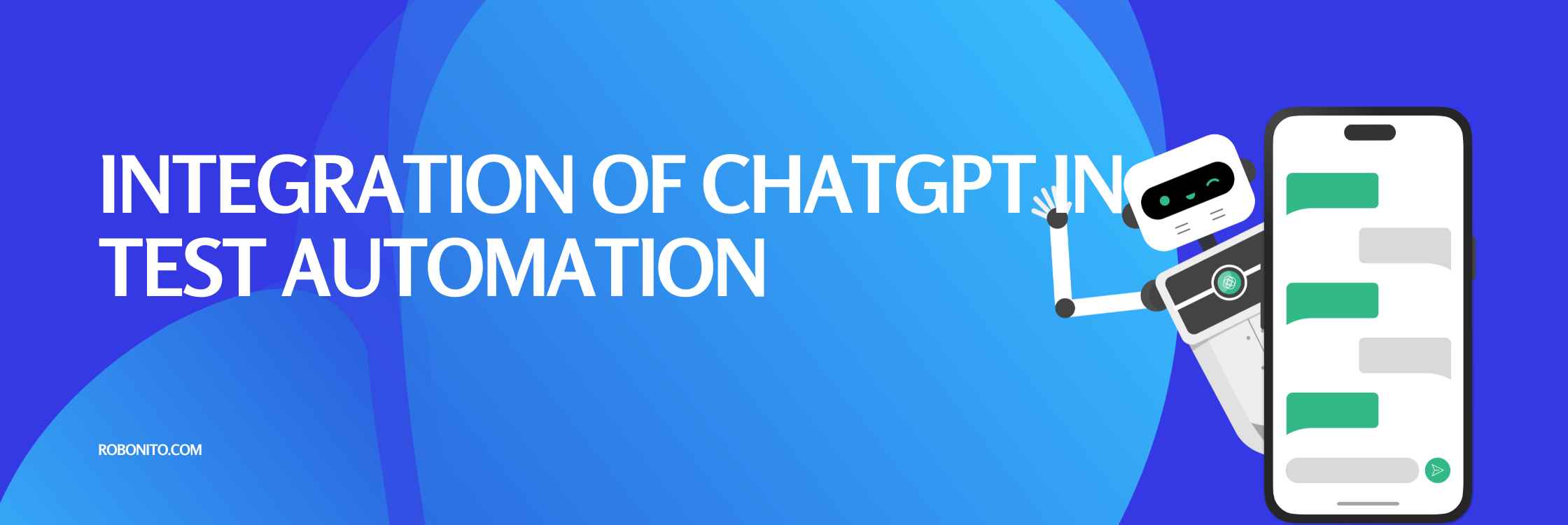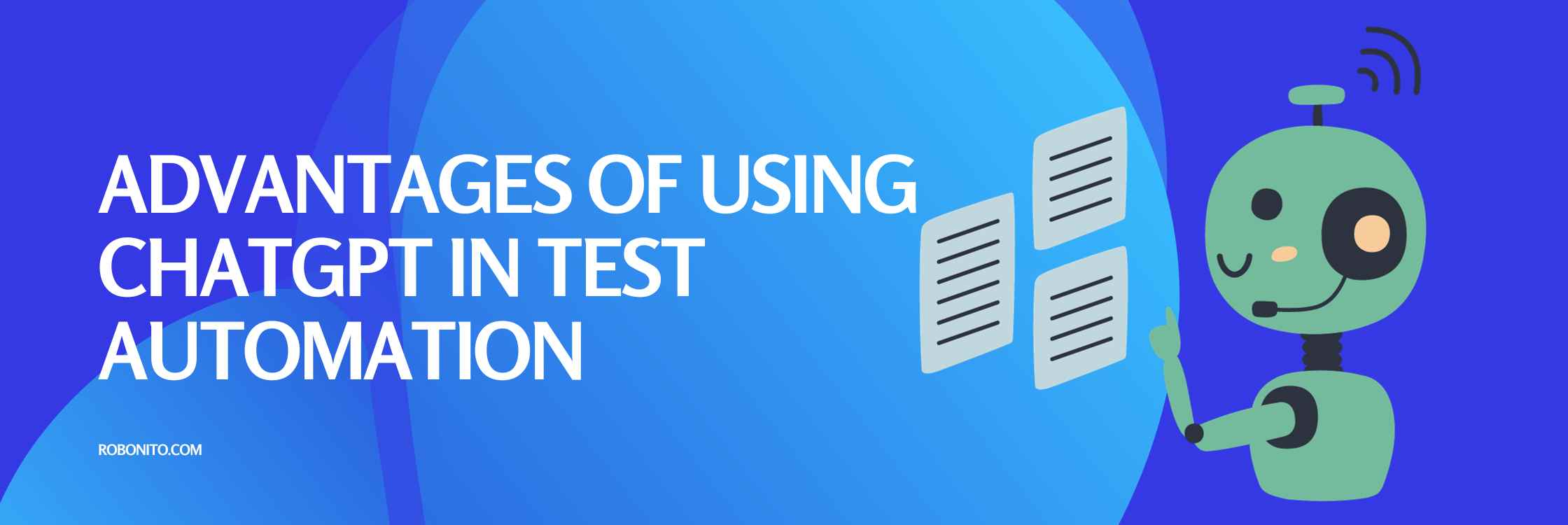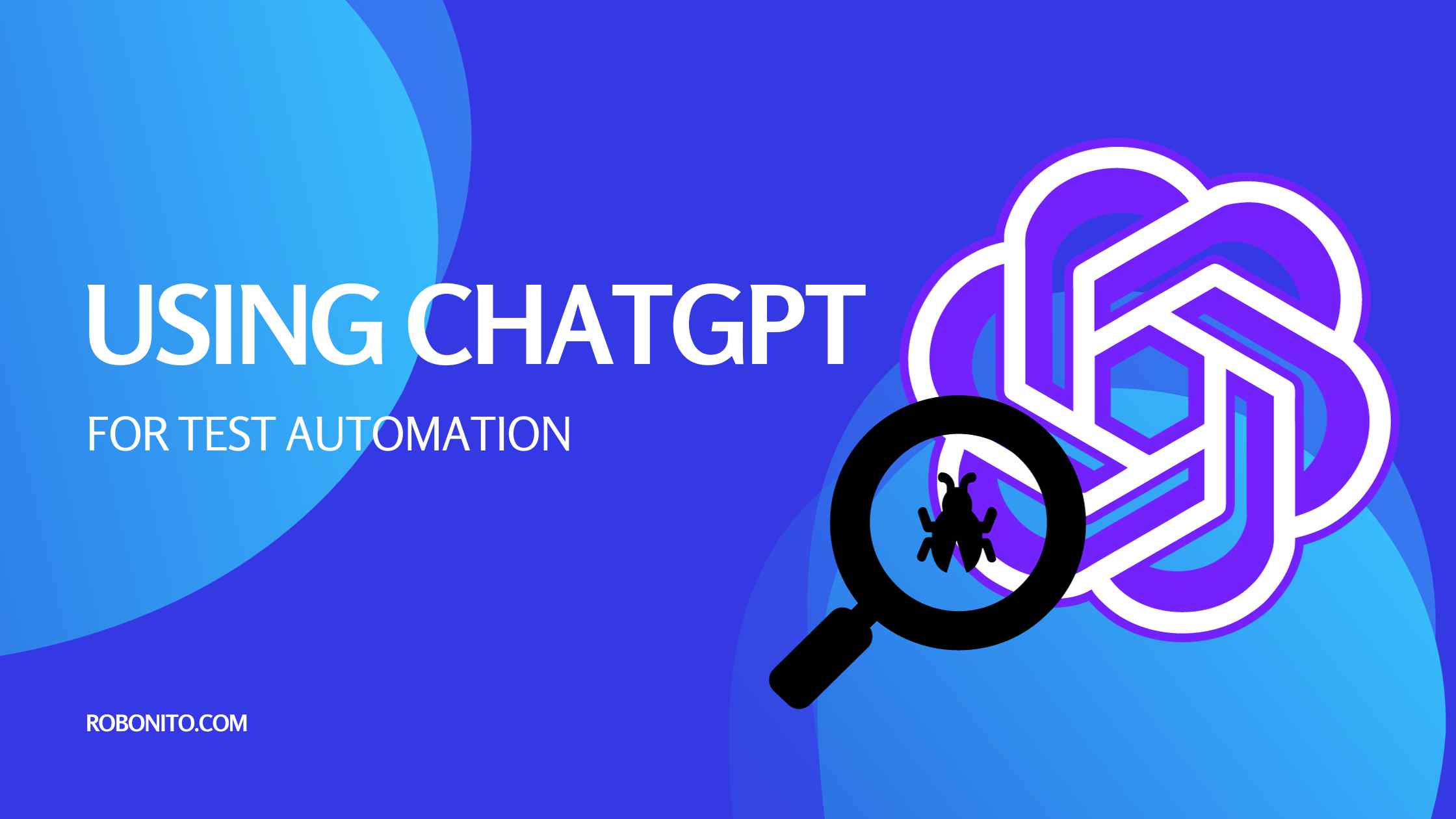Test automation stands as a critical pillar, providing efficiency, accuracy, and speed in product validation. Over time, it has evolved to become indispensable in ensuring the quality and reliability of software applications.
ChatGPT
Who don't know about ChatGPT, an advanced natural language processing (NLP) model developed by OpenAI, has gained immense popularity due to its remarkable language comprehension abilities. Its versatile applications span across multiple industries, including customer service, content generation, and software development.
Integration of ChatGPT in Test Automation

Incorporating ChatGPT into test automation offers a myriad of benefits. Its capability to interpret and generate human-like text significantly aids in creating automated test cases, analyzing results, and fostering seamless communication between testers and developers.
ChatGPT Features for Test Automation
The strength of ChatGPT lies in its robust natural language processing capabilities, empowering it to efficiently interpret and generate test cases or scenarios. Its adaptability and scalability make it a highly suitable choice for various automation needs in software testing.
Implementing ChatGPT in Test Automation
Integrating ChatGPT into test automation processes can significantly enhance the capabilities of software testing through advanced Natural Language Processing (NLP). This integration allows for more comprehensive and intuitive testing scenarios, facilitating better communication and interaction between automated testing systems and end-users.
The implementation of ChatGPT within test automation involves a systematic step-by-step approach. Initially, the testing team needs to identify specific areas within their testing framework where incorporating natural language understanding can be beneficial. This could include scenarios such as validating user inputs, assessing the comprehensiveness of responses, or evaluating system behavior based on natural language commands.
Once the areas for integration are determined, the next step involves selecting the appropriate interfaces or APIs provided by the ChatGPT framework. These interfaces enable seamless communication between the testing environment and the ChatGPT model. It might involve utilizing APIs that allow sending text inputs to the model and receiving responses in real-time, ensuring a dynamic interaction between the automated testing system and the NLP model.
After selecting the interfaces, the integration process progresses to incorporating these functionalities into the existing testing framework. This integration might necessitate coding adjustments or developing wrappers to facilitate communication between the testing scripts and the ChatGPT model. The goal is to create a streamlined process where the testing system can leverage the NLP capabilities without disrupting the overall testing workflow.
Testing the integrated solution is a crucial phase in the implementation process. This involves conducting extensive tests to ensure that the integration works seamlessly across various testing scenarios. It includes validating the accuracy and responsiveness of ChatGPT's outputs within the automated testing environment. Rigorous testing helps identify and address any potential issues or discrepancies that may arise during the interaction between the testing scripts and the NLP model.
Furthermore, it's essential to consider the scalability and performance aspects of the integrated solution. Analyzing the performance metrics, such as response time and resource utilization, ensures that the integration operates efficiently, even under varying workloads and demands.
Post-implementation, continuous monitoring and fine-tuning of the integrated system are crucial. This involves analyzing user interactions, refining the NLP model based on the feedback received during testing, and updating the integration to accommodate any changes or improvements in the ChatGPT framework.
| Steps | Description |
|---|---|
| Identify Integration Areas | Determine specific testing scenarios where NLP integration can enhance testing efficacy, such as validating user inputs, assessing response comprehensiveness, or evaluating system behavior based on natural language commands. |
| Select ChatGPT Interfaces/APIs | Choose suitable interfaces/APIs provided by ChatGPT framework to enable communication between the testing environment and the NLP model. These APIs facilitate sending text inputs to the model and receiving real-time responses for dynamic interaction. |
| Integrate Functionalities into Testing Framework | Incorporate selected interfaces/APIs into the existing testing framework by making necessary code adjustments or developing wrappers. Ensure seamless communication between testing scripts and ChatGPT without disrupting the overall workflow. |
| Conduct Extensive Testing | Perform thorough testing to validate accuracy and responsiveness of ChatGPT outputs within the automated testing environment. Test across various scenarios to identify and address any potential issues or discrepancies in the integration. |
| Analyze Performance Metrics | Evaluate performance aspects like response time and resource utilization to ensure efficient operation under varying workloads. Analyze scalability and make adjustments as necessary for optimal performance. |
| Continuous Monitoring and Maintenance | Continuously monitor user interactions, refine the NLP model based on feedback, and update the integration to accommodate changes or improvements in the ChatGPT framework. Maintain the integrated system for ongoing efficiency and effectiveness. |
Advantages of Using ChatGPT in Test Automation

The utilization of ChatGPT significantly enhances efficiency, accuracy, and reliability in test scenarios. Its prowess in automating repetitive tasks and aiding in result analysis streamlines workflows, allowing testers to focus on critical aspects of testing.
Challenges and Future Prospects
While the benefits of ChatGPT in test automation are notable, challenges like data privacy concerns and continuous monitoring for accuracy should be addressed. However, the future holds promising innovations that could revolutionize software testing methodologies.
| Challenges | Future Prospects |
|---|---|
| Data Privacy Concerns | - Enhanced Testing Capabilities: Advancements in NLP and machine learning for improved understanding of testing scenarios. - Adaptive and Self-Learning Systems: AI models becoming adaptive and self-improving. |
| Continuous Monitoring for Accuracy | - Privacy-Preserving Techniques: Exploring methods like federated learning and differential privacy for data security. - Ethical AI Implementation: Developing ethical guidelines for responsible AI usage in testing. |
| Overall Outlook | - Continued Innovation: Potential advancements in technology could revolutionize software testing methodologies. - Balanced Approach: Addressing challenges while leveraging benefits for enhanced efficiency in test automation. |
Conclusion
Integrating ChatGPT into test automation processes presents an opportunity to elevate software testing standards significantly. Its advanced NLP capabilities offer a new dimension to testing, enhancing efficiency and accuracy in the software development lifecycle.
FAQs
1. What makes Robonito unique in test automation?
Robonito is a completely no-code RPA automation testing tool that simplifies software testing processes remarkably. Its intuitive recorder, coupled with an assertion feature for UI and Flow testing, saves hundreds of hours. The AI-powered code generation technology further enhances testing effectiveness and efficiency.
2. How does Robonito contribute to efficient testing?
Robonito's AI-powered code generation technology eliminates manual intervention in test case creation, allowing testers to focus on critical aspects. Its intuitive interface and assertion feature ensure precise UI and Flow testing, streamlining the entire testing process.
3. Can Robonito integrate seamlessly with existing testing frameworks?
Yes, Robonito's no-code nature enables seamless integration with various existing testing frameworks. Its compatibility ensures a smooth transition and adoption without disrupting ongoing testing processes.
4. What are the benefits of AI-driven features in Robonito?
The future release of AI-driven features in Robonito aims to further enhance application testing by providing more effective and efficient testing capabilities. This includes advanced functionalities to streamline testing workflows and improve overall software quality.
5. How does Robonito help in delivering projects on time?
Robonito's intuitive recorder, assertion feature, and AI-powered code generation significantly expedite testing processes, allowing for quicker bug identification and resolution. This, in turn, contributes to timely project deliveries.
